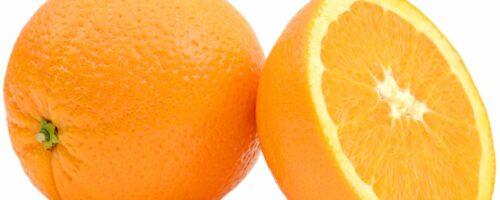
Bahia, Brazil
How is it produced?
The majority of Navel oranges available in British Columbia come from Southern California. The general process of growing Navel oranges starts with the citrus tree. Citrus trees have a long productive life making them valuable for the grower. After growing with the help of sunlight, water, and good cultural practices such as fertilizers and pruning, the oranges will be ready to be picked. The oranges usually mature at the same time every year, so when they seem ripe to pick workers from the packing house will send outfield men to test the blocks of fruit when they have an order to fill. The field men will then test the sugar and acid content of the fruit as well as the checking the size and color, they then determine when they are going to pick a certain block. Once a block is mature and an order needs to be filled by the packing house, a picking crew will come out and harvest the trees by hand or machines. They are then counted, weighed, and packaged, with every package marked with details of the number of fruit, quality class, variety, and origin. They are then kept in storage until shipment in cold stores. Oranges are mainly transported in cartons, standard boxes, half-boxes, wire-bound boxes, or fruit crates made of corrugated board or wood. They are sometimes also transported in net bags.
Describe the supply chain to the store shelf in Canada:
Because Navel oranges are produced and distributed as is, there is a rather simple order of supply chain events. The oranges are produced by the supplier. After there is an order received, the oranges go from the cold storage into transportation. The oranges are transported through several means of transportation such as ships, aircraft, trucks, or railroads. They need to be transported in refrigerated containers with a fresh air supply or controlled atmosphere from their originating country, which in this case would be California. The oranges go from the supplier in California to the distributor where they would to the transporter, who then delivers them to the retailer here in Canada. From the retailer, the Navel oranges are purchased by the shopper.
What is the power balance between the producer and seller?
The producer in this case would be the farming companies producing the oranges, and the seller would be the grocery store retailers or any other purchasers. Most grocery stores get their Navel oranges ( and most other produce) in either of two ways. They either purchase the fresh fruit directly from farmers or buy them through grocery distribution companies. There are grocery distribution companies specializing in just produce and distribution companies specializing in specific grocery items. These grocery distributors often work directly with grocery stores or act as middlemen to connect grocery stores with farmers, importers, and producers of groceries. However, farmers do play a big role. They produce grocery items, decide how grocery items are distributed to stores by grocery distributors, and choose which grocery distribution company they want to work with. So there would be more power with the producer than the seller in this case.
Can you recommend changes to the system to improve the balance?
If I were to recommend any changes within the system, it would be within the power balance of the producer and those involved in the production of the fruit. With the production of Navel oranges most, if not all, of the work is done by the farmworkers. Farmworkers, who are almost always migrant farmworkers. These workers are severely underpaid, endure terrible working conditions, with very little liberties. In ways, these farmworkers are very much exploited by the large farming companies they work for. The legal status of these workers, where around 60% are undocumented immigrants, are forced to endure whatever harsh conditions their superiors order as they have no other options to provide for their families. There needs to be stronger agricultural legislation protecting these workers, as well as strong unions and other interests there to protect these workers.
References/Resources:
Bloch, S. (2019, January 15). In California, Wonderful Citrus strike exposes a murky world of unequal pay for farmworkers. The Counter. Retrieved April 9, 2022, from https://thecounter.org/wonderful-citrus-farmworker-strike-california-labor/
Citrus in Canada. (2021). OEC. Retrieved April 9, 2022, from https://oec.world/en/profile/bilateral-product/citrus/reporter/can
Fallows, D. (2015, May 7). Riverside, California’s Eliza Tibbetts. The Atlantic. Retrieved April 7, 2022, from https://www.theatlantic.com/national/archive/2015/05/californias-navel-orange-queen/392624/
Hein, T. (2020, August 31). Agriculture in Canada. The Canadian Encyclopedia. Retrieved April 9, 2022, from https://www.thecanadianencyclopedia.ca/en/article/agriculture-in-canada
How Do Oranges Grow? (2018, March 19). American Farm Bureau Foundation for Agriculture. Retrieved April 9, 2022, from https://www.agfoundation.org/news/how-do-oranges-grow
Immigrant Lives in the OC and Beyond: Work. (n.d.). UCI Libraries. Retrieved April 9, 2022, from https://www.lib.uci.edu/sites/all/exhibits/immigrant/index.php?page=section_4
Issues Affecting Farm Workers – NFWM. (n.d.). National Farm Worker Ministry. Retrieved April 9, 2022, from https://nfwm.org/farm-workers/farm-worker-issues/
Oranges – Transport Informations Service. (n.d.). TIS GDV. Retrieved April 9, 2022, from https://www.tis-gdv.de/tis_e/ware/obst/orangen/orangen-htm/
Parsons, R. (2015, February 6). Navel oranges: full of history, flavor and uses, but not seeds. Los Angeles Times. Retrieved April 7, 2022, from https://www.latimes.com/food/la-fo-calcook-20150207-story.html
Sackman, D. C. (2007). Orange Empire: California and the Fruits of Eden. University of California Press.
3-1 CHAPTER 3 AGRICULTURE Section A: General Provisions Article 3.1: Definitions For the purposes of this Chapter: agricultura. (n.d.). USTR. Retrieved April 10, 2022, from https://ustr.gov/sites/default/files/files/agreements/FTA/USMCA/Text/03_Agriculture.pdf
Troy, E. (2016). How Did The Navel Orange Originate? | CulinaryLore. culinarylore.com. Retrieved April 9, 2022, from https://culinarylore.com/food-history:how-did-the-navel-orange-originate/
United States-Mexico-Canada Agreement | United States Trade Representative. (n.d.). USTR. Retrieved April 10, 2022, from https://ustr.gov/trade-agreements/free-trade-agreements/united-states-mexico-canada-agreement
USMCA – Impact on agriculture | Canada | Global law firm. (2018). Norton Rose Fulbright. Retrieved April 10, 2022, from https://www.nortonrosefulbright.com/en/knowledge/publications/f3a05b3f/usmca—impact-on-agriculture

